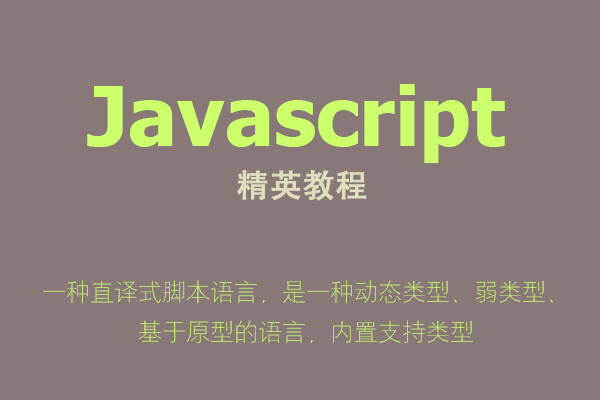
我们通过Ajax在服务器与客户端之间传输数据的时候,只能够接收到2种类型的信息:第一种是使用responseText来获取纯文本信息,第二种是使用responseXML来获取XML格式的字符串文本。2种方式都是获取字符串,那么如果我们需要获取某个对象的信息该如何操作呢?
下面我们通过一个完整的例子来介绍基于XML格式的获取对象信息的方法。我们以PHP为服务器端代码,其它JAVA、C#等编程语言的操作也基本类似。
在这个例子中,在服务器端有一个Person类,我们创建一个Person.class.php文件,文件中的代码如下:
/** Person.class.php **/
<?php
class Person{
private $id;
private $name;
private $age;
/** 公开的get和set方法 **/
public function getId(){
return $this->id;
}
public function setId($id){
$this->id = $id;
}
public function getName(){
return $this->name;
}
public function setName($name){
$this->name = $name;
}
public function getAge(){
return $this->age;
}
public function setAge($age){
$this->age = $age;
}
}
?>然后,我们创建一个PersonService.php文件,这个文件是我们要通过Ajax请求的文件。在这个文件中,我们创建了3个person对象,然后通过字符串拼接的方法将对象的信息拼接为XML格式的字符串。最后将这个字符串返回。
/** PersonService.php **/
<?php
require_once 'Person.class.php';
header("Content-type: text/xml; charset=utf-8");
$person1 = new Person();
$person1->setId(1);
$person1->setName("Leon");
$person1->setAge(23);
$person2 = new Person();
$person2->setId(2);
$person2->setName("Ada");
$person2->setAge(22);
$person3 = new Person();
$person3->setId(3);
$person3->setName("Mike");
$person3->setAge(25);
//通过字符串来拼接xml文档
$xml = "<persons>";
$xml.="<person>";
// person1
$xml.="<id>";
$xml.=$person1->getId();
$xml.="</id>";
$xml.="<name>";
$xml.=$person1->getName();
$xml.="</name>";
$xml.="<age>";
$xml.=$person1->getAge();
$xml.="</age>";
$xml.="</person>";
// person2
$xml.="<person>";
$xml.="<id>";
$xml.=$person2->getId();
$xml.="</id>";
$xml.="<name>";
$xml.=$person2->getName();
$xml.="</name>";
$xml.="<age>";
$xml.=$person2->getAge();
$xml.="</age>";
$xml.="</person>";
//person3
$xml.="<person>";
$xml.="<id>";
$xml.=$person3->getId();
$xml.="</id>";
$xml.="<name>";
$xml.=$person3->getName();
$xml.="</name>";
$xml.="<age>";
$xml.=$person3->getAge();
$xml.="</age>";
$xml.="</person>";
$xml.= "</persons>";
echo $xml;
?>注意,因为要返回XML格式,所以需要使用header()函数来注明Content-type为text/xml。
现在,在浏览器中直接访问这个php页面,就可以获取到一个XML格式的返回文档,如下图所示:

到此,服务器端代码就编写完毕了。下面我们接着编写客户端代码。我们使用一个叫show.html的静态页面来作为显示页面。当我们访问这个页面的时候,页面中有一个按钮,点击这个按钮就可以从服务端获取所有的Person对象,然后将Person对象的属性打印在页面的指定区域中。
下面是show.html文档的代码,代码十分简单,在<body>中有一个按钮和一个<div>容器。当我们点击按钮的时候,会从服务器端获取所有的Person对象,并将它们的属性打印在容器中。
<!DOCTYPE html> <html lang="zh"> <head> <meta charset="UTF-8"> <title>Ajax获取对象-基于XML方式</title> </head> <body> <button id="btn">获取Person对象数据</button> <div id="container"></div> </body> </html>
接下来我们开始写JavaScript代码。首先我们在页面加载完成之后调用init函数。在init函数中通过getPerson()方法完成Ajax调用。
<script type="text/javascript">
window.onload = init;
function init(){
document.getElementById("btn").onclick = getPerson;
}
</script>根据上一篇文章中介绍的完成一个Ajax请求需要3个步骤:
1、创建XMLHttpRequest对象
2、检测XMLHttpRequest对象的状态,在合适的时候处理
3、发送请求
所以,getPerson函数应该像下面的样子:
function getPerson(){
//1、获取XMLHttpRequest对象
var xhr = createXMLHttpRequest();
//2、通过xhr对象打开页面
xhr.onreadystatechange = function(){
//3、处理请求
if(xhr.readyState == 4 && xhr.status == 200){
//3.1、获取xml节点
//3.2、循环获取person的信息,并组装为xml格式
//3.3、将person数据写入container容器中
}
}
xhr.open("POST","PersonService.php",true);
xhr.setRequestHeader("Content-type","application/x-www-form-urlencoded");
xhr.send();
}
// 获取XMLHttpRequest对象
function createXMLHttpRequest(){
var xhr;
//IE5和IE6
if(window.ActiveXObject){
try{
xhr = new ActiveXObject(Microsoft.XMLHTTP)
}catch(e){
xhr = new ActiveXObject("Msxml2.XMLHTTP");
}
}else if(window.XMLHttpRequest){
//其它主流浏览器
xhr = new XMLHttpRequest();
}else{
alert("你使用的浏览器不支持XMLHttpRequest!");
return false;
}
return xhr;
}注意,xhr.open()方法中我们使用的提交方式为POST方式。这种方式需要调用xhr.setRequestHeader()方法来设置请求头的Content-type。如果你的请求中带有参数,可以在send()方法中传入。例如下面的代码:
xhr.open("POST","test.php",true);
xhr.setRequestHeader("Content-type","application/x-www-form-urlencoded");
xhr.send("id=1&name=Leon");在xhr对象的readyState为4并且status为200的时候,说明Ajax请求结束并且没有出错,此时,我们可以处理返回的响应信息。
xhr.onreadystatechange = function(){
//3、处理请求
if(xhr.readyState == 4 && xhr.status == 200){
//3.1、获取xml节点
var xmlDoc = xhr.responseXML;
var persons = xmlDoc.getElementsByTagName("person");
var nodes = "";
//3.2、循环获取person的信息,并组装为xml格式
for(var i = 0; i < persons.length; i++){
nodes += getValueByProp(persons[i],"id") + "------" +
getValueByProp(persons[i],"name") + "------" +
getValueByProp(persons[i],"age") + "<br>";
}
//3.3、将person数据写入container容器中
document.getElementById("container").innerHTML = nodes;
}
}上面的代码中,首先通过xhr.responseXML获取返回的XML文档。然后获取这个XML文档中的所有person标签中的内容,最后通过一个for循环将获取的person对象的属性和值拼接为一个字符串,并把它们写入到container容器中。
到这里,一个完整的基于XML格式通过Ajax获取对象属性的例子就完成了。完整的客户端JavaScript代码如下:
/** 基于XML格式的Ajax请求客户端JavaScript代码 **/
<script type="text/javascript">
window.onload = init;
function init(){
document.getElementById("btn").onclick = getPerson;
}
function getPerson(){
//1、获取XMLHttpRequest对象
var xhr = createXMLHttpRequest();
//2、通过xhr对象打开页面
xhr.onreadystatechange = function(){
//3、处理请求
if(xhr.readyState == 4 && xhr.status == 200){
//3.1、获取xml节点
var xmlDoc = xhr.responseXML;
var persons = xmlDoc.getElementsByTagName("person");
var nodes = "";
//3.2、循环获取person的信息,并组装为xml格式
for(var i = 0; i < persons.length; i++){
nodes += getValueByProp(persons[i],"id") + "------" +
getValueByProp(persons[i],"name") + "------" +
getValueByProp(persons[i],"age") + "<br>";
}
//3.3、将person数据写入container容器中
document.getElementById("container").innerHTML = nodes;
}
}
xhr.open("POST","PersonService.php",true);
xhr.setRequestHeader("Content-type","application/x-www-form-urlencoded");
xhr.send();
}
// 通过属性获取对象值的方法
function getValueByProp(node,prop){
return (node.getElementsByTagName(prop))[0].firstChild.nodeValue;
}
// 获取XMLHttpRequest对象
function createXMLHttpRequest(){
var xhr;
//IE5和IE6
if(window.ActiveXObject){
try{
xhr = new ActiveXObject(Microsoft.XMLHTTP)
}catch(e){
xhr = new ActiveXObject("Msxml2.XMLHTTP");
}
}else if(window.XMLHttpRequest){
//其它主流浏览器
xhr = new XMLHttpRequest();
}else{
alert("你使用的浏览器不支持XMLHttpRequest!");
return false;
}
return xhr;
}
</script>







网友评论文明上网理性发言 已有0人参与
发表评论: